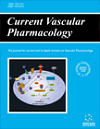
Full text loading...
We use cookies to track usage and preferences.I Understand
Cardioimmunology is an emerging branch of medicine whose development has been facilitated by more sophisticated diagnostic procedures. Recent studies have mainly focused on the immune response during myocardial infarction (MI), and there is evidence that both resident and external immune cells participate in acute inflammatory disease, as well as tissue remodeling. Following MI, macrophages, dendritic cells (DCs) and mast cells (MCs) are the main players in the heart. Under steady-state conditions, cardiac resident macrophages (CRMs) protect the heart against stress and infectious events, being involved in cell and matrix turnover, as well as phagocytosis of apoptotic cells. Moreover, CRMs contribute to the resolution of inflammation via release of interleukin (IL)-10, and efferocytosis of dying cells. Conversely, CCR2+ monocyte-derived macrophages promote inflammation in the acute phase of myocardial damage, with the release of pro-inflammatory cytokines. Conventional (c) DCs possess enhanced capacity to present antigens to T lymphocytes. In MI patient autopsies, massive infiltration of T helper (Th) cells and CDs has been detected in the myocardium. Cardiac MCs play a dual role during MI, with the production of cytokines for early inflammatory response, and the release of anti-inflammatory cytokines, IL10 and IL-13 during the resolution phase. In experimental coronary artery ligation, the myocardium is infiltrated with Th1, Th2, Th17, and T regulatory (TREG) cells, which participate in the acute inflammation. In cardiac repair, T cell reparative response is mediated by TREG cells, with improved ventricular remodeling and function post-ischemia. In this review, emphasis will be placed on the innate and adaptive immune response during and post-MI. At the same time, immunotherapy-based cardiac failure following chimeric antigen receptor T-cell and immune checkpoint inhibitory therapy will be pointed out.

Article metrics loading...

Full text loading...
References


Data & Media loading...

